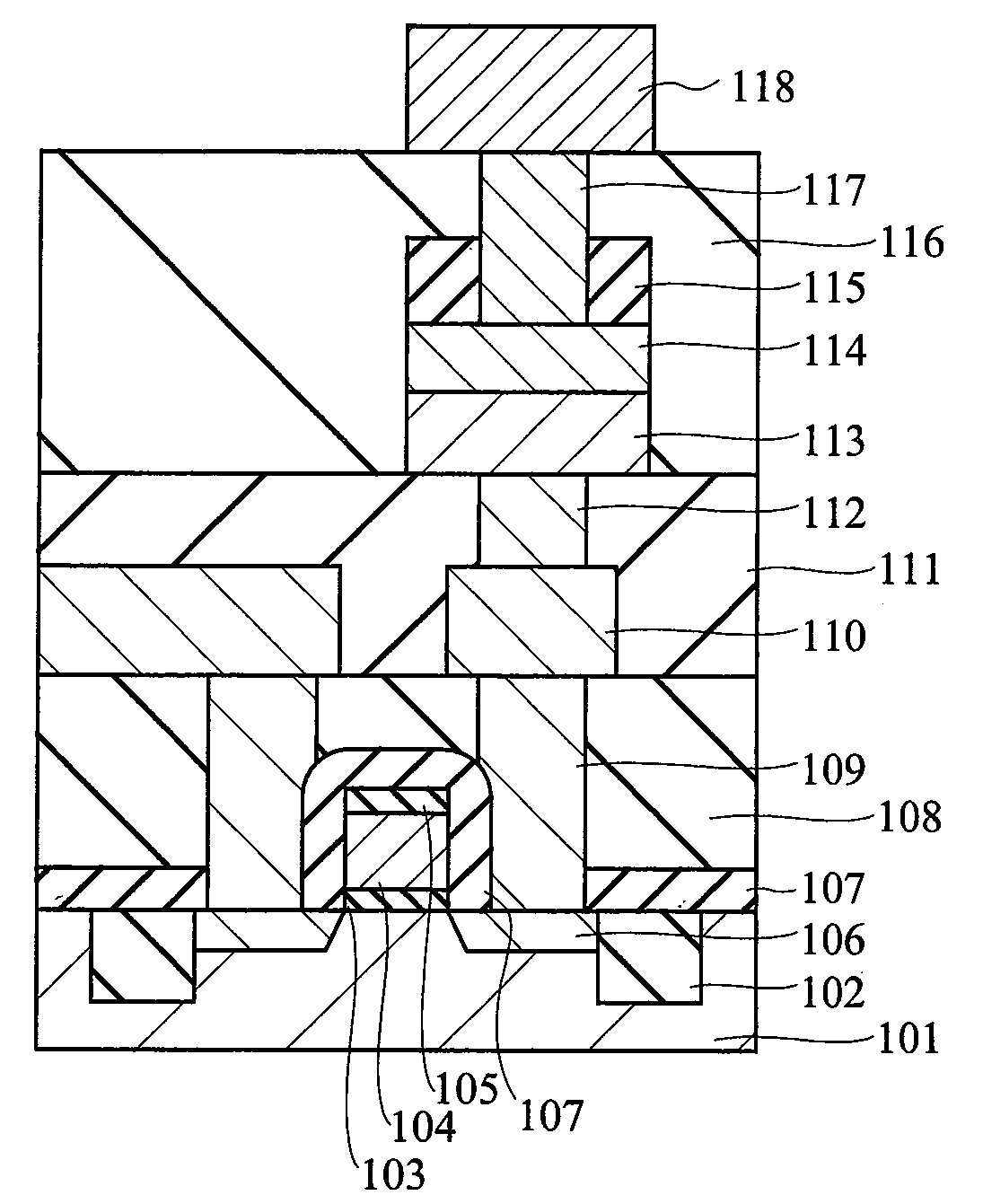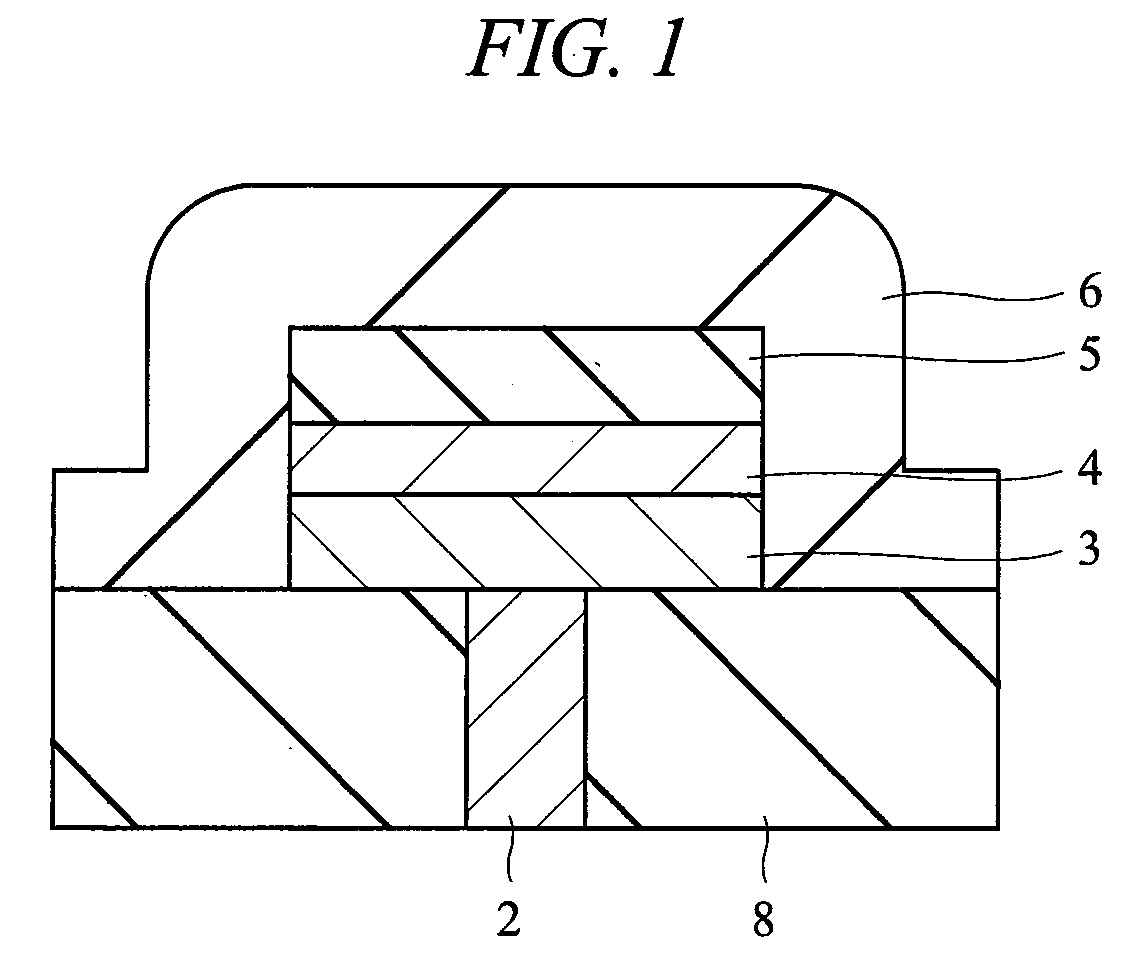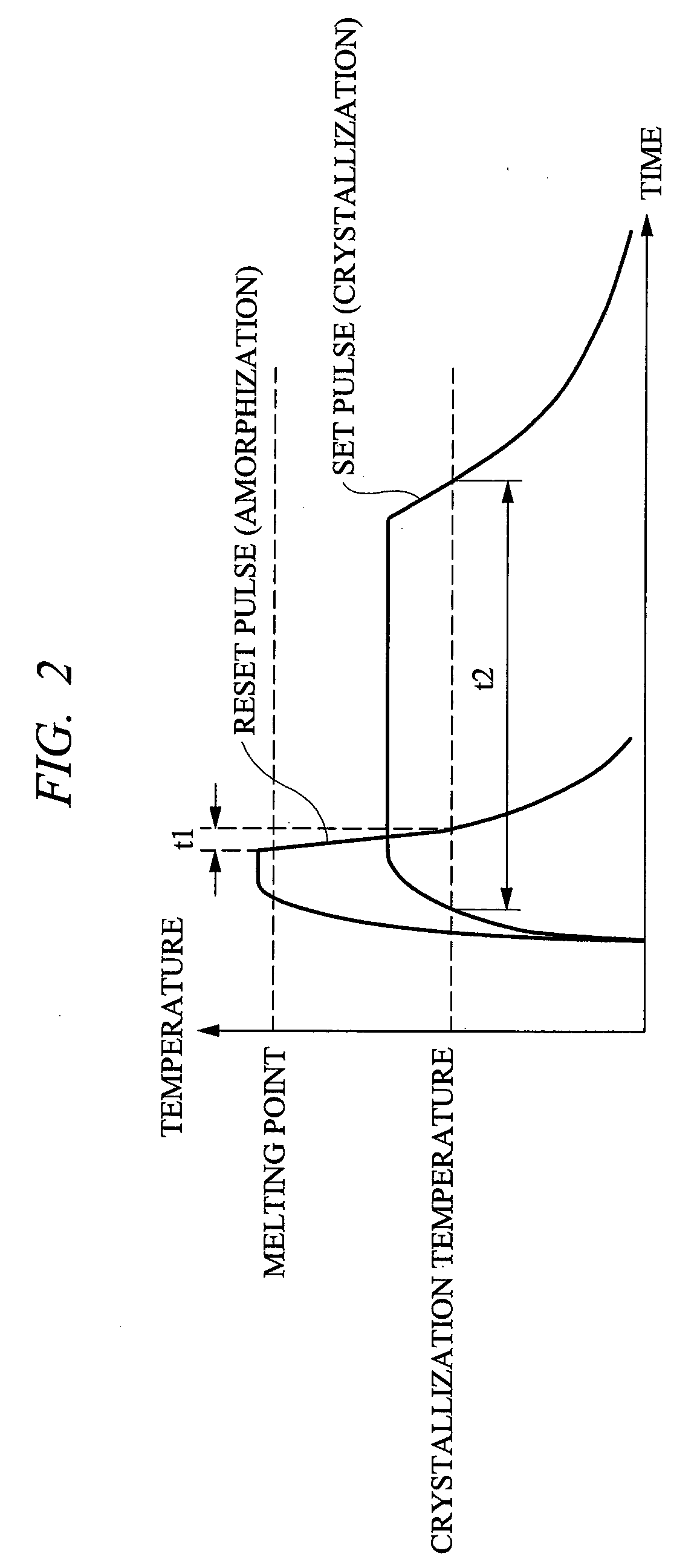Semiconductor device and process for producing the same
a technology of semiconductors and dielectric films, applied in the direction of semiconductor devices, bulk negative resistance effect devices, electrical appliances, etc., can solve the problems of difficult to increase the degree of integration, low access speed of semiconductor devices, unsuitable for large-capacity memory, etc., and achieve the effect of preventing the exfoliation of interlayer dielectric films
- Summary
- Abstract
- Description
- Claims
- Application Information
AI Technical Summary
Benefits of technology
Problems solved by technology
Method used
Image
Examples
first embodiment
[0046]First, a phase-change memory cell according to the present invention will be described with reference to FIG. 1 and FIG. 2. FIG. 1 is a cross sectional view of main parts schematically showing the phase-change memory cell according to the present invention. FIG. 2 is an explanatory diagram showing current pulse specifications for changing phase states of a chalcogenide.
[0047]The phase-change memory of FIG. 1 comprises: an interlayer dielectric film 8 provided above a select transistor (not illustrated) formed on a main surface of a semiconductor substrate; a plug 2 selectively provided penetrating through the interlayer dielectric film 8 and having an end electrically connected to the select transistor; a chalcogenide material layer 3 electrically connected to the other end of the plug 2 and provided so as to extend on the interlayer dielectric film 8; and a top electrode 4 provided on the chalcogenide material layer 3. Note that, although it will be described later, a fluorin...
second embodiment
[0077]In the above-described first embodiment, the case in which the interlayer dielectric film containing fluorine is formed below the chalcogenide material layer has been described; however, in a present second embodiment, the case in which fluorine is added to the interface between the chalcogenide material layer and the interlayer dielectric film will be described.
[0078]As described above, in the phase-change memory according to the present invention shown in FIG. 1, the adhesive layer 7 formed of a conductive material such as Ti or Al is not provided like shown in above-described FIG. 10 and FIG. 11. The above-described adhesive layer 7 is provided since the conductive materials are readily reacted with the chalcogenide material, the bonding force of the interface is enhanced, and the exfoliation resistance of the chalcogenide material layer 3 is improved. However, as described above, the problems such that a large current is required for phase change and that the additional st...
PUM
 Login to View More
Login to View More Abstract
Description
Claims
Application Information
 Login to View More
Login to View More - R&D
- Intellectual Property
- Life Sciences
- Materials
- Tech Scout
- Unparalleled Data Quality
- Higher Quality Content
- 60% Fewer Hallucinations
Browse by: Latest US Patents, China's latest patents, Technical Efficacy Thesaurus, Application Domain, Technology Topic, Popular Technical Reports.
© 2025 PatSnap. All rights reserved.Legal|Privacy policy|Modern Slavery Act Transparency Statement|Sitemap|About US| Contact US: help@patsnap.com



